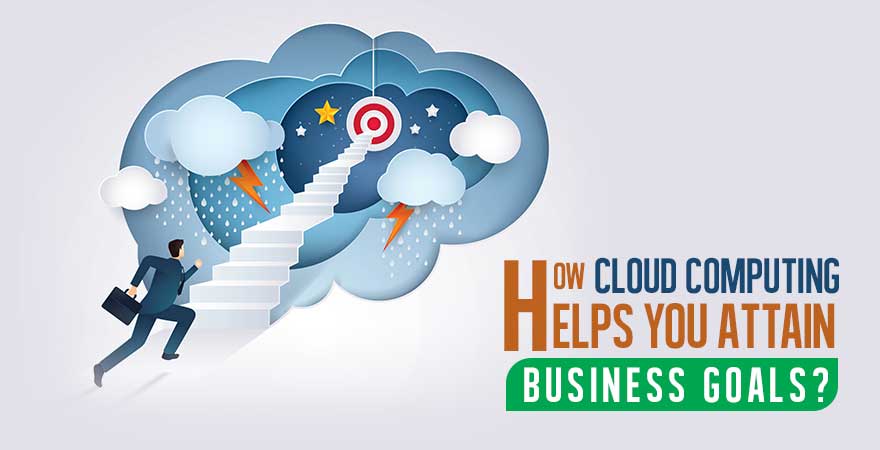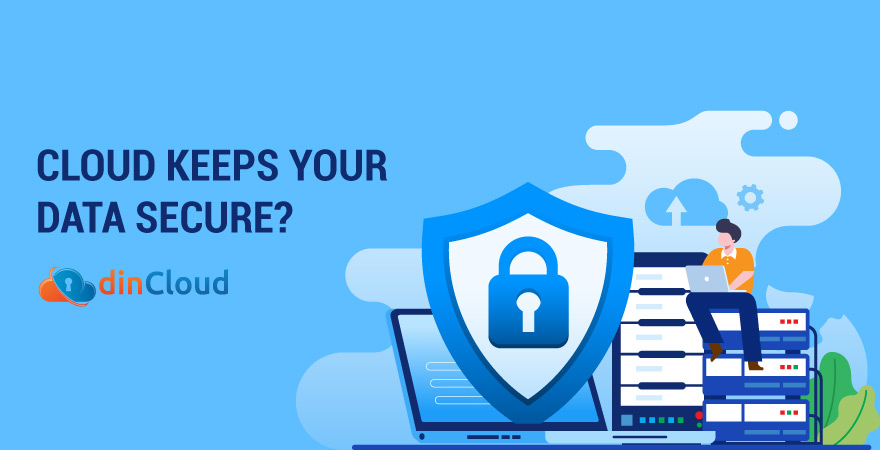Every business oriented establishment wants to maximize profits and keep the cost factor at a minimal level. Even if we analyze the non-profit entities, their long term viability also hinges around keeping the costs in check.

In this post, we will try to highlight how a cloud computing solution will further your business goals.
With a plethora of technologies around us, it at times becomes overwhelming to choose the best course of action. So far as choosing the right IT Architecture is concerned, we can at least make it a tad easier for you. Let’s first draw a brief outline of how the cloud works.
Also Read:
- 8 Reasons: Why Cloud Computing For Small Business?
- Cloud Computing and Strategic Business Advantages 2020
- Business Continuity vs. Disaster Recovery
How Does the Cloud Work?
The term cloud is broad based and incorporates many different things in it. To keep matters simple, if storage, processing or database management is being offered over a centralized and converged architecture, it will broadly be classified as a cloud powered service or solution.
On one end of this spectrum is a Cloud Service Provider (CSP) that specializes in all or some of the above cited technologies. At the other end of the cloud paradigm lies an end user which may be an individual, a group of people or a whole organization.
Now, the question that arises is what bridges this gap between the CSP and end user. In most cases, this gap is bridged by the very internet we use on a daily basis. The major exception is an organization which has highly specialized needs or wants to maintain total exclusivity.
As we have developed a basic understanding of the cloud, let’s dive straight into the subject matter as to how will the cloud serve your organizational goals effectively.
How the Cloud Reduces Your Capital Expenditures (CapEx)?
In their infancy, most business entities are very cash starved. Ironically, not many people are ready to risk their money on a venture that may or may not succeed at the end of day. So, what most entrepreneurs are left with is meager resources to turn their vision into success.
IT hardware has become the backbone of virtually any business model. Even if you don’t need IT directly, its role is bound to be introduced at some stage of your product or service delivery model. Why spend loads of money on I.T hardware when you have the cloud at your disposal.
In any cloud based solution, the procurement, maintenance and up gradation of IT hardware is the sole responsibility of your CSP. This takes out a major chunk of your CapEx demand and the same resources can be channelized elsewhere.
How can Cloud Curtail Your Operating Expenses (OpEx)?
Since we have dealt with the CapEx part, let’s explore how a cloud powered solution will reduce the much dreaded operating expenses. Even the most efficiently managed businesses struggle to curtail this notorious expense head. Firstly, you save money by freeing up physical space that would have been required for IT hardware.
It does not end here, once you set up an on premise data center, you have to maintain a certain environment to extract optimal performance from that hardware. This jacks up your utility bills, which form a sizeable portion of your operational expenses.
By using a cloud powered service, you not only reduce your CapEx but also OpEx. This can have a major impact on the financial viability of your business and these valuable savings can be channelized to improve the actual product or service that your business is offering.
How the Cloud Takes Care of Resource Variations?
If you maintain IT Infrastructure on premise, you will have to plan and procure all the hardware resources. When forecasting these needs, you will have to plan on the worst case usage scenario. Ultimately, you will end up procuring hardware that is way in excess of your routine demand.
In monetary terms, this phenomenon is known as “over-capacity”. You know it but there is little you can do because the very repute of your business is on the line. Now, the situation is not that good when we consider the flip side, which is periods of slack.
When you are experiencing a lackluster trend, you can’t do much because you own all the hardware. You can’t just throw away idle hardware as precious dollars were spend on acquiring and maintaining it. Once you move to the cloud, things on the resource utilization front will depict a much better picture.
A cloud solution is scalable in real-time. This means your business can instantly commission more resources from your CSP, just be paying an additional usage fee. You don’t have to add any costly hardware to handle a period of demand hike.
The cloud is equally good when it comes to handling periods of slack. As soon as you have coped with heightened demand, you can instantly de-commission the freed up cloud resources and reduce your usage bill. This won’t result in any hardware related worries as all the hardware is handled by your CSP.
How the Cloud Keeps Your Data Secure?
The security of cloud based solutions remains in the spotlight for both the right and wrong reasons. Firstly, the very repute of a CSP relies on its physical and cyber security protocols. To maintain a spotless track record in security, CSPs employ the best technical and human resources.

Also Read:
- Top 11 Guidelines for Cloud Security in 2020
- Cloud Security Breaches of 2019 and the Way Forward
- Jan 2020 Roundup of Data and Cyber Security Breaches
On top of that, data management is increasingly coming under the radar of regulators all across the globe. Before a CSP can secure good clients, it has to get its data centers certified for cyber security. On top of the regulatory layer lies a robust mechanism of imposing monetary fines over non-complying CSPs.
A CSP will keep your data secure by employing a multi-faceted approach. A good CSP will have strong virtual firewalls to thwart any un-authorized access. It will also keep your data encrypted so that even if there is a breach, the compromised data is of no use to the perpetrator.
Before a user is granted access to data over the cloud, there is a robust mechanism for user authentication. Now, CSPs have moved towards multi-factor authentication so that even if someone gets their hands on a user’s login credentials, access to the cloud data will still be denied by failing the second validation layer.
How the Cloud is Super Fast?
I.T hardware gets obsolete at a very rapid pace. So, it is otherwise not a prudent option to maintain it on premise. Your in house IT resources will become inadequate or obsolete before you even know it. The only solution is to pump more money on the latest hardware that supports your business needs.

With a cloud based solution, you don’t have to worry about hardware obsolescence and compromised performance. A CSP employs the latest, most efficient servers and storage solutions to offer a seamless experience to its users. It won’t be wrong to say that if you can afford the cloud bill, access to resources is nearly limitless.
To accomplish a task in minimal time and free up resources for some other cloud tenant, a CSP can allocate many times more resources that would otherwise be employed by you over the on premise hardware. There are many processing intensive workloads that only the cloud has the capability to handle.
How the Cloud is Easier to Manage?
- You don’t have to maintain a data center and supporting hardware on premise.
- A cloud based solution can be scaled up or down as per varying needs in real time.
- The scaling process of a cloud solution can be completed in a matter of few minutes.
- Most CSPs allow the end user to self-manage cloud resources through an intuitive portal.
- You will be billed purely on a need basis, so there will neither be overcapacity nor underutilization.
How the Cloud is More Accessible?
In a typical IT configuration, your employees can remain productive only for the working hours of business. As soon as they leave the office premises, they won’t be able to access work. Secondly, due to this limitation, you are left with limited options when it comes to hiring human capital.
This is not the case with a cloud based solution. So long as there is internet connectivity, your employees can access their work even from thousands of miles away. The other great aspect of cloud accessibility is that an employee can remain productive over a smartphone, tablet, laptop or desktop.
With such a vast and easy accessibility via the cloud, employees can remain productive from home or even when travelling. They no longer need to physically show up for work. Secondly, you can engage human capital even from the remotest corner of the globe, which brings diversity to the organization.
Conclusion
In this post, we have outlined some major advantages of a cloud computing solution for your business. A good cloud solution will not only bring your costs down, but also open up new avenues for organizational efficiency and diversity. The resources you save by moving to the cloud can be channelized elsewhere.
However, choosing the optimal cloud solution for your organization still remains an issue that needs serious homework. To select the best solution, you will have to clearly chalk out your organization’s existing and upcoming computing needs.
Lastly, don’t always go for the CSP which is just the most cost effective. As your organizational needs will evolve over time, you should prefer a CSP that has both the flexibility and capability to customize its cloud based solution to your organization’s dynamic needs.


